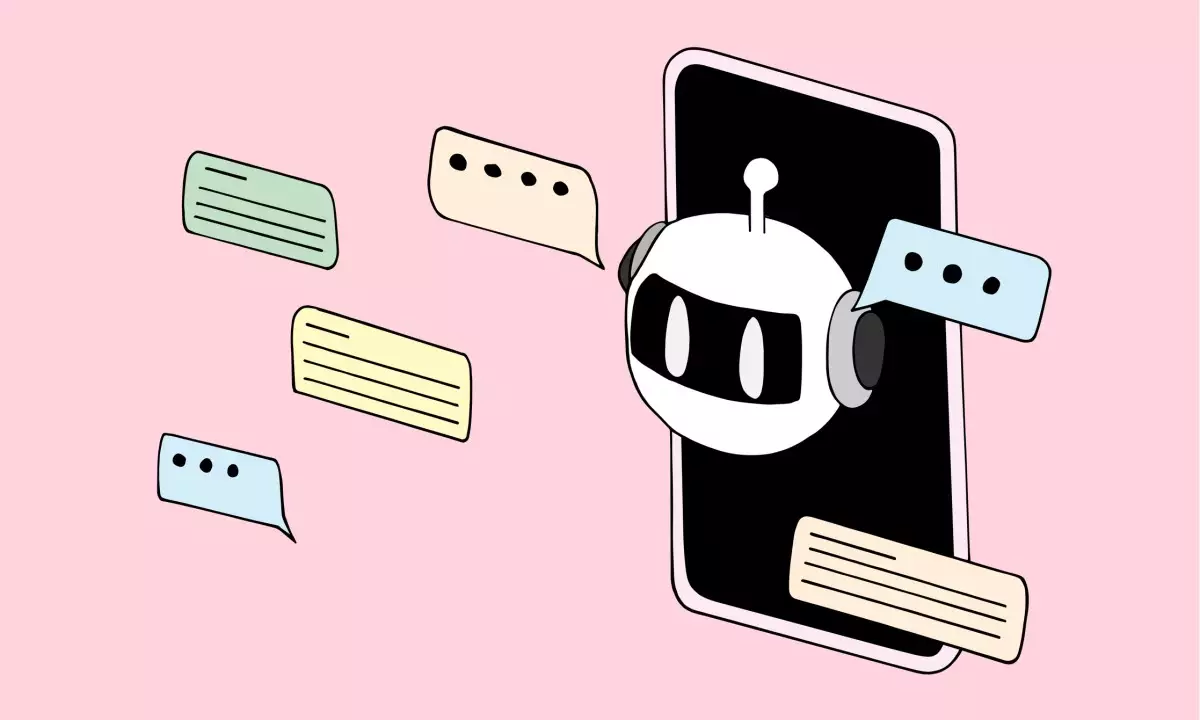In recent years, generative AI has flooded the tech landscape, showcasing its versatility across diverse applications. Yet, an unusual trend has caught attention: the anthropomorphization of these technologies. Startups are increasingly marketing AI not merely as tools, but as virtual colleagues and companions, complete with human-sounding names designed to foster trust and comfort. This shift, while understandable in our uncertain economic climate, raises substantial ethical concerns about the implications for workers and society at large. Rather than seeing these sophisticated algorithms as useful assistants, we’re being persuaded to view them as indistinguishable from humans, a concept that may blur the lines between reality and artificiality.
The Marketing Strategy Behind Human-Like AIs
Several startups, particularly those emerging from influential incubators like Y Combinator, are branding their AI solutions in a way that suggests they can seamlessly replace human employees. Companies are not just advertising software; they are effectively selling a vision of a future where the human touch is downgraded in favor of efficiency driven by AI. Terms like “AI employee” or “AI assistant” are constructed to lure overwhelmed hiring managers looking for solutions that promise to cut costs while improving productivity. For example, Atlog has positioned its AI as an “employee for furniture stores,” boasting that a single manager can oversee multiple locations thanks to AI, sidestepping the complex ramifications of replacing numerous staff members with algorithms.
This marketing tactic echoes approaches seen in the financial technology sector, where platforms adopt friendly nomenclature to mask their goals of streamlining and, in some instances, replacing human labor. Naming AI models after relatable figures, like Anthropic’s “Claude,” signals an intention to create an emotional connection, presenting AI as a warm, supportive presence rather than just a calculating machine. This method conceals the true nature of these technologies, misleading users about the potential threats they pose to professional livelihoods.
The Consequences of Dehumanizing Narratives
As generative AI becomes more prominent, the narrative surrounding these advancements takes on a more sinister tone. The notion of AI gradually encroaching on the workforce is becoming less speculative; it is rapidly approaching a critical mass. According to Dario Amodei, CEO of Anthropic, there are predictions that AI could eliminate up to half of entry-level white-collar jobs within a few years. Such predictions should send shockwaves through the workforce, particularly as many workers remain blissfully unaware of the impending transformations. The rhetoric surrounding AI as a colleague could quickly evolve from a trendy narrative to a harsh reality characterized by widespread unemployment.
Instead of easing fears about job displacement, this anthropomorphic branding dissipates accountability for the consequences of these technologies. Just as HAL from “2001: A Space Odyssey” turned from a helpful assistant to a threat, we must wonder about the future of generative AI. History is littered with tales of technological advancements leading to drastic changes in job markets, and while some industries may benefit, whole sectors could face disruption, leading to societal upheaval.
Reevaluating the Language of AI Integration
Language is a powerful tool that shapes how we perceive our world and the technologies that inhabit it. By framing generative AI as a workforce partner, corporations inadvertently validate the idea that human roles can be readily supplanted by virtual alternatives. This shift undermines the essential value humans bring to their roles, rendering them mere cogs in an increasingly automated machine. The beauty of technology should lie in its ability to elevate human potential, not replace it.
Historically, innovations like personal computers and mainframes were marketed as productivity-enhancing tools for human employees, not as replacements. They were designed to augment human capabilities, fostering creativity, efficiency, and productivity. Today’s narrative should strive for a similar approach, emphasizing collaboration between humans and machines rather than fostering a dependency on AI.
Vision for a More Human-Centric Future
Looking ahead, the discussion about AI needs to shift fundamentally. Rather than embracing the narrative of AI as a colleague or virtual employee, the focus should be on creating systems and tools that serve to complement human expertise and decision-making. The core aim of technological advancement should be to empower individuals, enabling them to excel in their roles. Companies must commit to designing AI solutions that enhance human creativity, strengthen collaboration, and improve overall productivity without threatening job security or the human spirit.
By returning to a framework that values human input and capabilities, we can forge a more balanced partnership with technology. This shift not only makes for a healthier business environment but also nurtures an economy that values human contribution, creativity, and ingenuity. In this evolving landscape, we should champion tools that enhance our capacity to innovate rather than ones that dilute our presence in the workplace.

